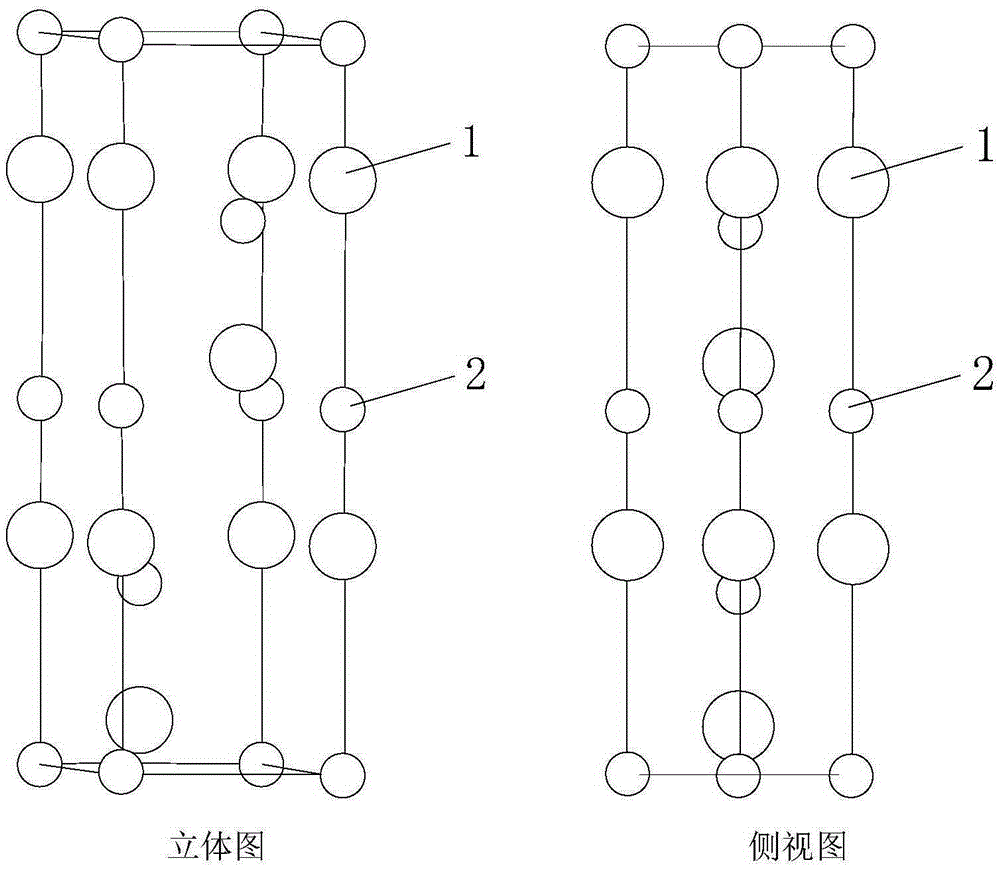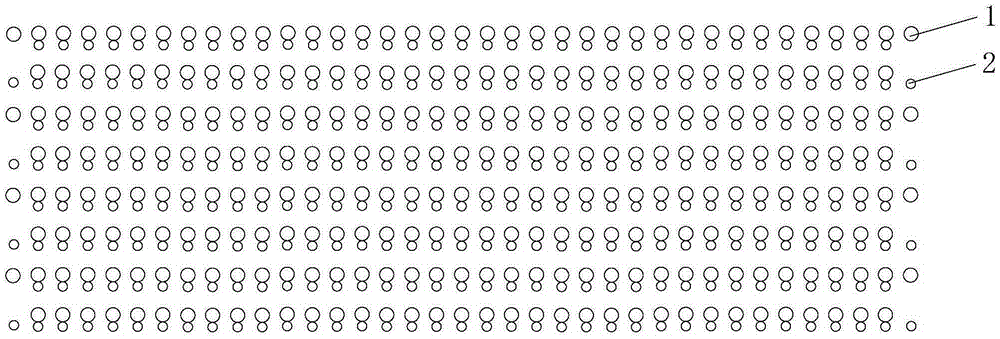Three-dimensional atomic structure model made from 4H-SiC material and having deflection angle of 4 degrees as well as construction method and application therefor
An atomic structure, 4h-sic technology, applied in special data processing applications, instruments, calculations, etc., can solve the problem of deviation between the simulation model and the actual situation, and achieve the effect of simple steps and wide application
- Summary
- Abstract
- Description
- Claims
- Application Information
AI Technical Summary
Problems solved by technology
Method used
Image
Examples
Embodiment 1
[0059] A three-dimensional atomic structure model of a 4H-SiC material with a 4° off-angle, and its computer-aided construction method is as follows:
[0060] (1) Establish a three-dimensional atomic structure model of the 4H-SiC unit cell, such as figure 1 As shown, the three-dimensional atomic structure model of the 4H-SiC unit cell can be directly called from the model library, or can be drawn by itself according to the space group, lattice parameters, and atomic coordinates of the 4H-SiC unit cell. The 4H-SiC material has a hexagonal crystal structure cell, with cell parameters: α=90°, β=90°, γ=120°;
[0061] (2) Based on the 4H-SiC unit cell, establish the supercell model of 4H-SiC. The supercell model of 4H-SiC is the three-dimensional periodic repetition of the 4H-SiC unit cell in the x, y and z directions, x, y and the numerical value of z direction can be determined according to the size of required supercell, for example can select x=26, y=26, z=2, as figure 2...
Embodiment 2
[0067] A method for studying the epitaxial growth of silicon carbide with a 4° off-angle three-dimensional atomic structure model of 4H-SiC material is as follows:
[0068] (1) Establish a three-dimensional atomic structure model of 4H-SiC material with 4° off-angle;
[0069] (2) Using the silicon surface as the adsorption surface, place silicon atoms at different positions on the surface, conduct structural optimization and calculation of formation energy, and compare the positions where silicon atoms are more likely to be adsorbed (mainly distinguishing the places near the steps and the places far away from the steps).
[0070] (3) In the same way, place carbon atoms at different positions on the surface of silicon carbide with steps, perform structural optimization and calculation of formation energy, and compare the positions where carbon atoms are more likely to be adsorbed (mainly distinguish between near the steps and away from the steps).
[0071] (4) Place carbon atom...
Embodiment 3
[0074] A research method and control method for silicon carbide surface defects using a 4H-SiC material 4° off-angle three-dimensional atomic structure model, as follows:
[0075] (1) Establish a three-dimensional atomic structure model of 4H-SiC material with 4° off-angle;
[0076] (2) Establish the possibility of various defects on the basis of the model, such as: triangle defect, carrot defect, downfall, comet tail defect, etc., optimize their structure, calculate the formation energy, and compare the difficulty of defect formation, Analyze the effect of steps on defect formation.
PUM
 Login to View More
Login to View More Abstract
Description
Claims
Application Information
 Login to View More
Login to View More - R&D
- Intellectual Property
- Life Sciences
- Materials
- Tech Scout
- Unparalleled Data Quality
- Higher Quality Content
- 60% Fewer Hallucinations
Browse by: Latest US Patents, China's latest patents, Technical Efficacy Thesaurus, Application Domain, Technology Topic, Popular Technical Reports.
© 2025 PatSnap. All rights reserved.Legal|Privacy policy|Modern Slavery Act Transparency Statement|Sitemap|About US| Contact US: help@patsnap.com



